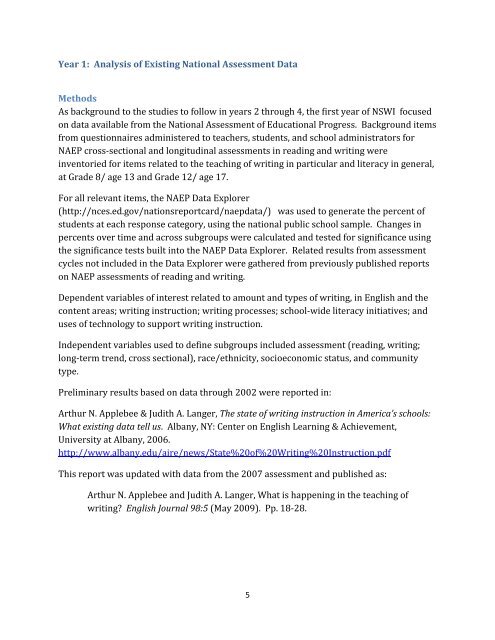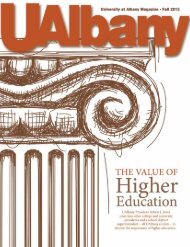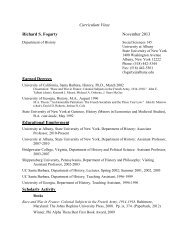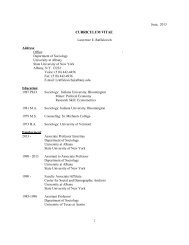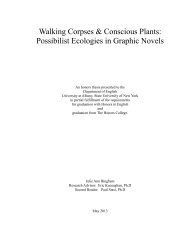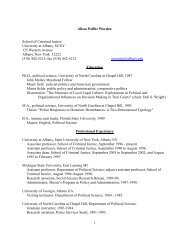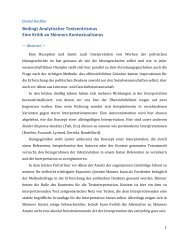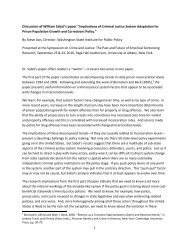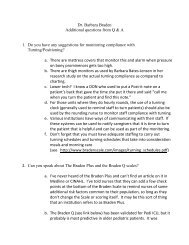The National Study of Writing Instruction - University at Albany
The National Study of Writing Instruction - University at Albany
The National Study of Writing Instruction - University at Albany
You also want an ePaper? Increase the reach of your titles
YUMPU automatically turns print PDFs into web optimized ePapers that Google loves.
Year 1: Analysis <strong>of</strong> Existing <strong>N<strong>at</strong>ional</strong> Assessment D<strong>at</strong>a<br />
Methods<br />
As background to the studies to follow in years 2 through 4, the first year <strong>of</strong> NSWI focused<br />
on d<strong>at</strong>a available from the <strong>N<strong>at</strong>ional</strong> Assessment <strong>of</strong> Educ<strong>at</strong>ional Progress. Background items<br />
from questionnaires administered to teachers, students, and school administr<strong>at</strong>ors for<br />
NAEP cross-sectional and longitudinal assessments in reading and writing were<br />
inventoried for items rel<strong>at</strong>ed to the teaching <strong>of</strong> writing in particular and literacy in general,<br />
<strong>at</strong> Grade 8/ age 13 and Grade 12/ age 17.<br />
For all relevant items, the NAEP D<strong>at</strong>a Explorer<br />
(http://nces.ed.gov/n<strong>at</strong>ionsreportcard/naepd<strong>at</strong>a/) was used to gener<strong>at</strong>e the percent <strong>of</strong><br />
students <strong>at</strong> each response c<strong>at</strong>egory, using the n<strong>at</strong>ional public school sample. Changes in<br />
percents over time and across subgroups were calcul<strong>at</strong>ed and tested for significance using<br />
the significance tests built into the NAEP D<strong>at</strong>a Explorer. Rel<strong>at</strong>ed results from assessment<br />
cycles not included in the D<strong>at</strong>a Explorer were g<strong>at</strong>hered from previously published reports<br />
on NAEP assessments <strong>of</strong> reading and writing.<br />
Dependent variables <strong>of</strong> interest rel<strong>at</strong>ed to amount and types <strong>of</strong> writing, in English and the<br />
content areas; writing instruction; writing processes; school-wide literacy initi<strong>at</strong>ives; and<br />
uses <strong>of</strong> technology to support writing instruction.<br />
Independent variables used to define subgroups included assessment (reading, writing;<br />
long-term trend, cross sectional), race/ethnicity, socioeconomic st<strong>at</strong>us, and community<br />
type.<br />
Preliminary results based on d<strong>at</strong>a through 2002 were reported in:<br />
Arthur N. Applebee & Judith A. Langer, <strong>The</strong> st<strong>at</strong>e <strong>of</strong> writing instruction in America’s schools:<br />
Wh<strong>at</strong> existing d<strong>at</strong>a tell us. <strong>Albany</strong>, NY: Center on English Learning & Achievement,<br />
<strong>University</strong> <strong>at</strong> <strong>Albany</strong>, 2006.<br />
http://www.albany.edu/aire/news/St<strong>at</strong>e%20<strong>of</strong>%20<strong>Writing</strong>%20<strong>Instruction</strong>.pdf<br />
This report was upd<strong>at</strong>ed with d<strong>at</strong>a from the 2007 assessment and published as:<br />
Arthur N. Applebee and Judith A. Langer, Wh<strong>at</strong> is happening in the teaching <strong>of</strong><br />
writing? English Journal 98:5 (May 2009). Pp. 18-28.<br />
5


